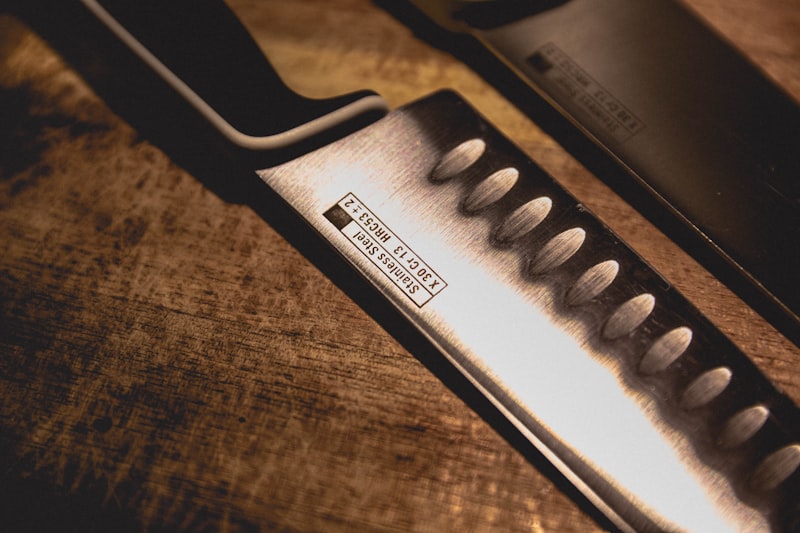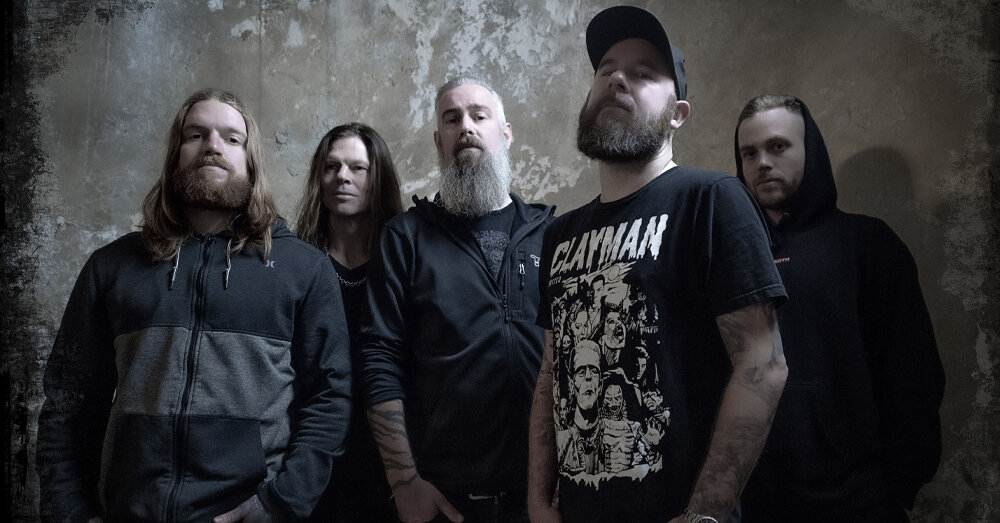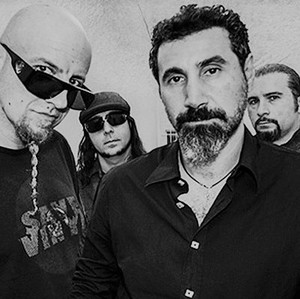At its core, groove metal revolves around the primal urge to move. It’s not just about hearing the music; it’s about feeling it pulsate through your entire being. Bands like Pantera pioneered this genre, infusing their songs with a relentless groove that makes you want to stomp your feet and thrash your head. Think of it as the adrenaline rush of metal music, where aggression meets groove in a sonic onslaught.
What sets groove metal apart is its rhythmic emphasis. Unlike traditional metal, where speed and technicality reign supreme, groove metal slows down the tempo just enough to let each riff sink in deep. It’s like a freight train barreling through your speakers, with each chug of the guitar and thump of the bass hitting you like a punch to the gut.
Imagine the stage presence of bands like Lamb of God or Sepultura, commanding the crowd with every thunderous riff and earth-shaking breakdown. It’s not just music; it’s a primal force that ignites the fire within. Groove metal isn’t confined to a genre – it’s a state of mind, a rebellion against the ordinary, and a celebration of the raw power of sound.
In essence, groove metal is about more than just the music; it’s about the experience. It’s about losing yourself in the relentless groove, letting go of inhibitions, and surrendering to the primal energy that courses through each riff and rhythm. So next time you crank up the volume and feel the ground tremble beneath your feet, remember: that’s the groove metal spirit, roaring to life.
Unveiling the Rhythmic Power: The Evolution of Groove Metal
Imagine a genre of music that hits you like a heavyweight boxer, each beat pounding with an irresistible force. That’s groove metal for you – a powerhouse in the realm of heavy music. Born out of the fertile grounds of thrash metal in the 1990s, groove metal carved its own path with a unique blend of aggression and groove.

What sets groove metal apart? It’s all in the rhythm. Unlike its thrash metal predecessor, groove metal emphasizes mid-tempo, syncopated rhythms that make you want to move. Picture yourself caught in the whirlwind of a mosh pit, every riff and drumbeat driving the crowd into a frenzy. Bands like Pantera pioneered this style, infusing their music with a visceral, almost primal energy that resonated with fans worldwide.
As the years rolled on, groove metal evolved, branching out into new territories while staying true to its rhythmic roots. Bands like Lamb of God brought a modern twist, combining relentless aggression with intricate guitar work and thunderous basslines. The result? A sound that not only shakes the walls but also challenges the listener to keep up with its ever-shifting cadence.


What makes groove metal so captivating? It’s the balance between raw power and precision. Each note, each chord progression is crafted to hit you right in the gut, leaving a lasting impression long after the music stops. It’s like a finely tuned machine – robust, yet agile enough to navigate the complexities of modern metal.
In essence, groove metal isn’t just music; it’s an experience. It’s the pulse-pounding rhythm that gets your heart racing and your head banging. It’s the embodiment of sonic intensity, where every riff tells a story of defiance and determination. So, whether you’re a die-hard metalhead or a casual listener, groove metal invites you to feel the music in your bones and embrace the power of its relentless groove.
Groove Metal Explained: From Origins to Modern Innovations
What sets groove metal apart is its focus on groove-oriented rhythms. Unlike the breakneck pace of thrash, groove metal emphasizes mid-tempo grooves that are both headbang-inducing and mosh pit-friendly. Guitarists in groove metal bands often utilize downtuned guitars and syncopated rhythms, creating a visceral impact that resonates with listeners.
Over the years, groove metal has evolved, incorporating elements from other genres like hardcore punk and industrial metal. Bands such as Lamb of God and Machine Head have pushed the boundaries, infusing groove metal with their own stylistic innovations while staying true to its roots of powerful riffage and rhythmic intensity.
In the modern metal scene, groove metal continues to thrive, with bands experimenting with new sounds and production techniques. The genre’s ability to evolve while maintaining its core elements ensures its relevance among metal enthusiasts worldwide. Whether it’s the aggressive breakdowns or the infectious grooves, groove metal remains a force to be reckoned with in the heavy music landscape.
Understanding groove metal means delving into its history of rebellion and sonic experimentation. It’s a genre that speaks to the raw energy and cathartic release that heavy metal fans crave. As it continues to evolve, groove metal proves that innovation and intensity can coexist, shaping the future of heavy music one riff at a time.
Beyond the Beats: How Groove Metal Reshaped Heavy Music

What sets Groove Metal apart is its emphasis on rhythmic patterns and mid-tempo chugging guitar riffs that are as hypnotic as they are heavy. Bands like Pantera, who are often credited as pioneers of the genre, brought forth a style that blended aggressive vocals with groove-laden guitar work and thunderous drumming. This fusion created a sound that was not only aggressive but also remarkably catchy, drawing in fans from both metal and hard rock circles.
The impact of Groove Metal goes beyond just its musical characteristics; it forged a new path for heavy music in the 1990s and beyond. Bands like Lamb of God, Machine Head, and Sepultura expanded on the foundations laid by Pantera, each bringing their own unique flair to the genre. This evolution kept Groove Metal relevant and ensured its longevity in an ever-changing musical landscape.
Moreover, Groove Metal’s influence extended beyond the confines of the metal scene. Its accessible yet powerful sound attracted listeners who might not have been traditional metalheads, broadening the genre’s appeal and reaching new audiences worldwide. This crossover success cemented Groove Metal as a formidable force in modern music, influencing countless bands across various sub-genres.
Groove Metal’s ability to blend aggression with groove and accessibility reshaped heavy music by creating a sound that was both formidable and infectious. Its impact continues to be felt today, with bands still drawing inspiration from its rhythmic intensity and uncompromising attitude. As the genre evolves, one thing remains clear: Groove Metal is here to stay, leaving an indelible mark on the world of heavy music.
In the Groove: Essential Bands Redefining Metal’s Pulse
Gojira, the French metal titans, have carved a niche with their progressive approach to death metal. Known for their environmentally conscious themes and bone-crushing soundscapes, Gojira’s music resonates with a primal force that speaks to both the mind and the soul. Their albums, such as “From Mars to Sirius” and “Magma,” showcase their ability to blend technical prowess with emotive storytelling.
Deafheaven, on the other hand, has stirred controversy with their fusion of black metal and shoegaze. Hailing from San Francisco, this band defies traditional genre boundaries with their ethereal melodies and blistering intensity. Albums like “Sunbather” and “Ordinary Corrupt Human Love” have catapulted them into the spotlight, earning both praise and criticism for their daring experimentation.
Babymetal, a Japanese sensation, brings a unique twist to metal with their fusion of J-pop and heavy metal. Combining catchy hooks with thunderous guitar riffs, Babymetal has captured a global audience with their electrifying live performances and infectious energy. Songs like “Gimme Chocolate!!” and “Karate” showcase their ability to blend contrasting genres seamlessly.
Tool, the enigmatic masters from Los Angeles, continue to push boundaries with their progressive metal sound. Known for their complex rhythms and philosophical lyrics, Tool’s music is an immersive experience that challenges listeners intellectually and emotionally. Albums like “Lateralus” and “Fear Inoculum” stand as monuments to their dedication to craftsmanship and artistic integrity.
Groove Metal Icons: Artists Who Defined a Genre
Let’s dive into the world of groove metal icons. Pantera, for instance, didn’t just contribute; they revolutionized. With Phil Anselmo’s raw, aggressive vocals and Dimebag Darrell’s searing guitar riffs, they created a blueprint for groove metal that many try to replicate but few can match. Their albums like “Vulgar Display of Power” are more than records; they’re anthems for anyone who lives for powerful riffs and relentless energy.
Next up is Sepultura. Picture a band that merges intense metal with tribal rhythms—yes, that’s Sepultura. Their innovative approach brought a fresh, earthy vibe to groove metal, setting them apart from their peers. Their album “Roots” is a masterclass in blending traditional Brazilian influences with heavy grooves, creating a sound that’s both fierce and unique.
Then there’s Machine Head, a band that took groove metal and pushed it into new territories. Their knack for combining melody with aggression has given us some of the genre’s most memorable tracks. The album “The Blackening” is a testament to their ability to weave intricate, groove-laden compositions that are both technically impressive and wildly engaging.
These groove metal icons didn’t just play the genre—they breathed new life into it. Their innovative approaches and distinctive sounds have left an indelible mark on the world of metal, making them legendary figures in the genre’s history.









3 thoughts on “Groove metal”